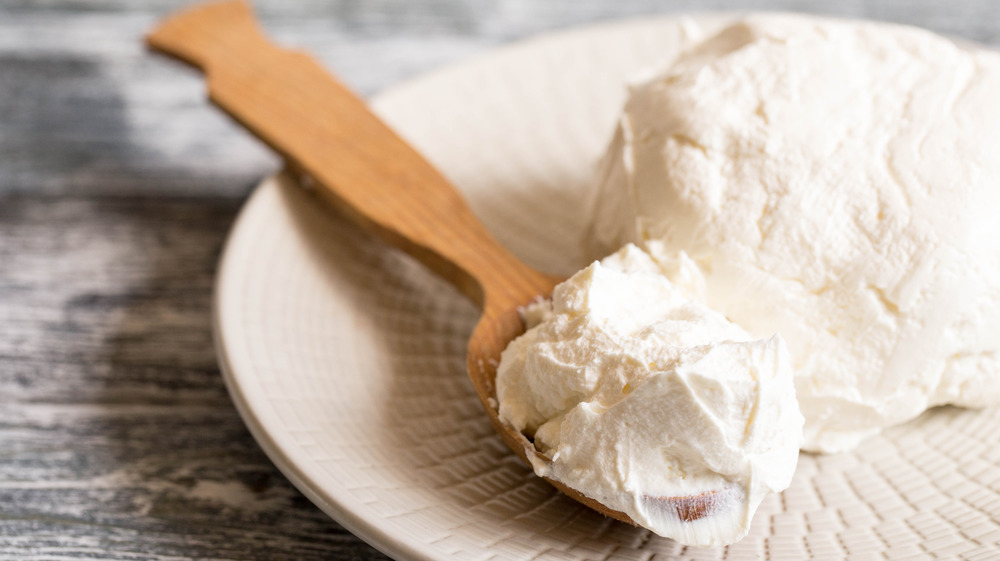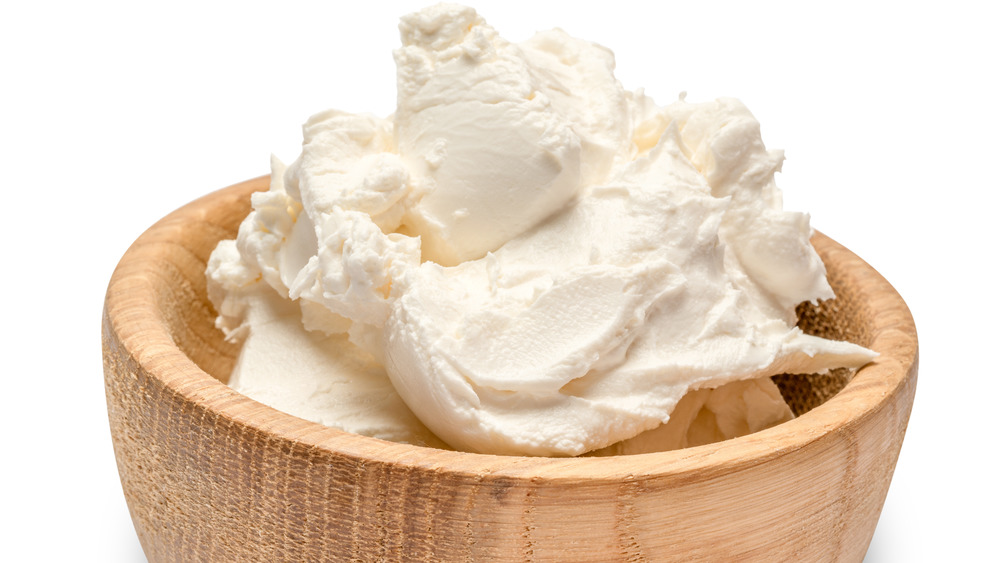What Is Mascarpone And How Do You Use It
Mainly known for its inclusion as a featured ingredient in the treasured Italian classic dessert tiramisu, mascarpone is much more than just that. Rich, smooth, and decadent, the ivory dairy product is an integral component in a multitude of dishes, but is sometimes brushed aside in favor of the cheaper and more commonplace cream cheese. But cream cheese has had its time in the sun. It's time to celebrate mascarpone for the singular ingredient that it is.
First and foremost, mascarpone is pronounced mas-car-POH-nay, not mar-scapone, and it is a thick, spreadable, silky cheese made from cow's milk. It is mild, with a slightly sweet taste and an uber-thick consistency. It is a triple cream cheese and contains up to 75 percent butterfat, according to The Spruce Eats, which is double the amount of typical American cream cheese. It hails from Lombardy and was created there during the renaissance. Delishably notes that mascarpone was awarded the PAT label, which stands for prodotto agroalimentare tradizionale – Italian for "traditional regional food product" — which officially states that certain foods or ingredients originate from particular regions. Interestingly enough, mascarpone actually bears more in common with creme fraiche than it does cream cheese.
How do you use mascarpone?
At its base, mascarpone is very simple: it's a combination of heavy cream and an acid (usually citric, tartaric, vinegar, or citrus juice) that are heated and thickened together, strained through cheesecloth, and left to thicken overnight. There are many recipes online if you'd like to try your hand at homemade mascarpone, but it's usually readily available at many markets nowadays. It has a very short shelf life and should be used very soon after opening.
Mascarpone is delicious when used in place of ricotta in cannolis and cheesecakes. It can be enjoyed as a thicker, richer "whipped cream" with honey and fruit, it can be used in place of frosting or icing, and it is an amazing option to use in parfaits, pies and tarts, cake batter, and oatmeal. Another common thought about mascarpone, though, is that it's used exclusively in desserts, but it is actually excellent in savory applications as well. Stir it into mashed potatoes, fill stuffed pastas like ravioli with it, or enjoy it with eggs or as a rich thickener in soups and pastas. The options are endless!

